Potensic Atom review: lightweight beginner drone with 3-axis gimbal
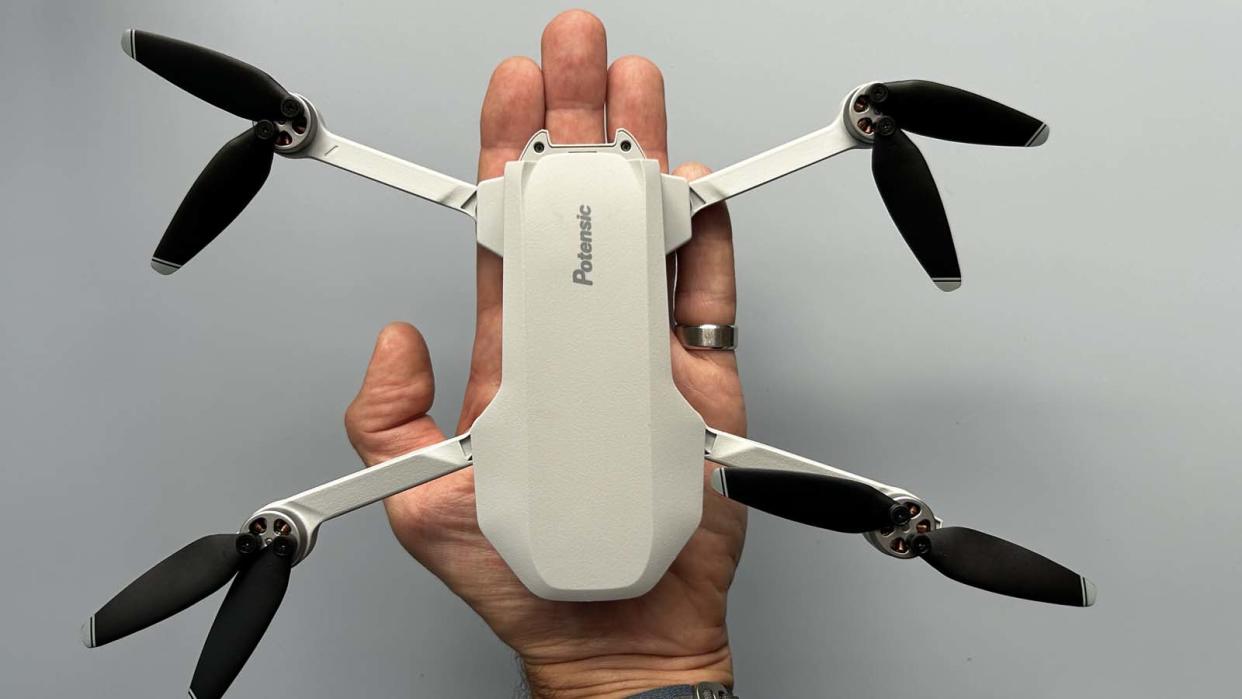
After trying its predecessor a few months back, I looked forward to testing and reviewing accessibly-priced drone brand Potensic's latest 3-axis flying tripod, the Potensic Atom. Sporting the same lightweight body as its predecessor but better stabilisation, you'd think that flying the new Atom is fun. And it really is.
Despite the sub-par camera performance, I enjoyed reviewing the Potensic Atome SE in April this year. It's an excellent beginner drone for those who can't afford the best drones (a.k.a. DJI's stuff). Potensic's app is pretty good, and its drones often punch above their weight regarding functionality and automatic features.
Thanks to the friendly price, I imagine the Pontesic Atom will be popular among beginner pilots – and indeed, it's definitely a nice enough drone. However, it falls short of delivering the ultimate beginner drone experience for the same reason its predecessor did, namely, camera quality.
So, how is it to fly the Potensic Atom? Is it worth the price? Who is it for? What do the videos/photos look like? Read my Potensic Atom review below to find out.
Potensic Atom review
Potensic Atom review: price and availability
The Potensic Atom was launched in September 2023 and is available to buy now directly from Potensic UK, Potensic US, and Potensic AU for a recommended retail price of £269/ $300/ AU$ 509. The standard Kit includes the drone, one battery and the controller.
The Fly More Combo, which includes the drone, the controller, three batteries, the clever Fast Charging Hub, and a carry case, costs £369/ $400/ AU$ 679. I'd recommend getting the Fly More Combo, as it doesn't cost that much extra and adds a bunch of useful accessories.
Potensic Atom review: specifications
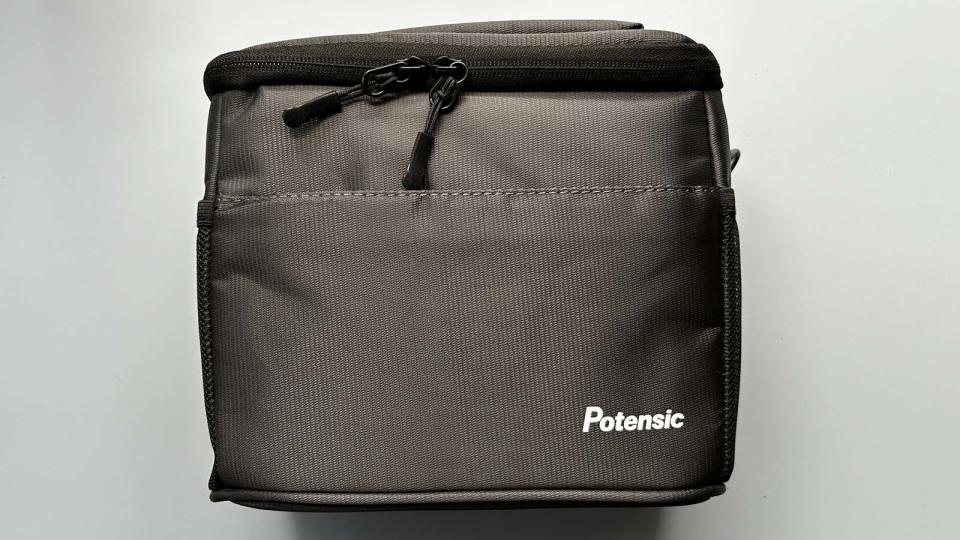
Weight: 239g (well under the 249g limit posed in some countries)
Maximum video resolution: 4K @ 30 fps
Maximum photo resolution: 12MP
Camera tilt range: +20° to -90°
Maximum transmission range: up to 6 km/ 19,685 ft
Maximum flight time: up to 32 minutes
Wind resistance: Level 5, up to 10.7 m/s
Connectivity: Via USB OTG cable, iOS11 and above, or Android 7.0 and above
Potensic Atom review: design and build quality
Lightweight chassis
Portable, folding design
Decent controller
The Potensic Atom is the spitting image of the Atom SE, which makes sense. The only real difference is the gimbal – of course – which looks more complicated on the new Atom, and the two cameras at the rear of the unit that help the drone with positioning. Otherwise, it's the same hard, grey plastic shell with the brand name subtly printed on the top.
This is a sub-249-gram drone, which allows more people to fly it without additional licenses. You do need a licence in most countries to fly drones, but you need more than one in some countries to fly heavier drones like the Ruko F11 GIM2. Not only is it light, but the Potensic Atom is also highly portable thanks to the folding design, which works well.
One small grief of mine is the gimbal cover. This translucent plastic accessory protects the unit from getting damaged in transit. It has a sticker on it with some warning messages, which you have to remove. However, the glue from the sticker doesn't come off, leaving the cover sticky. This doesn't affect performance, of course, but looks less than unappealing.
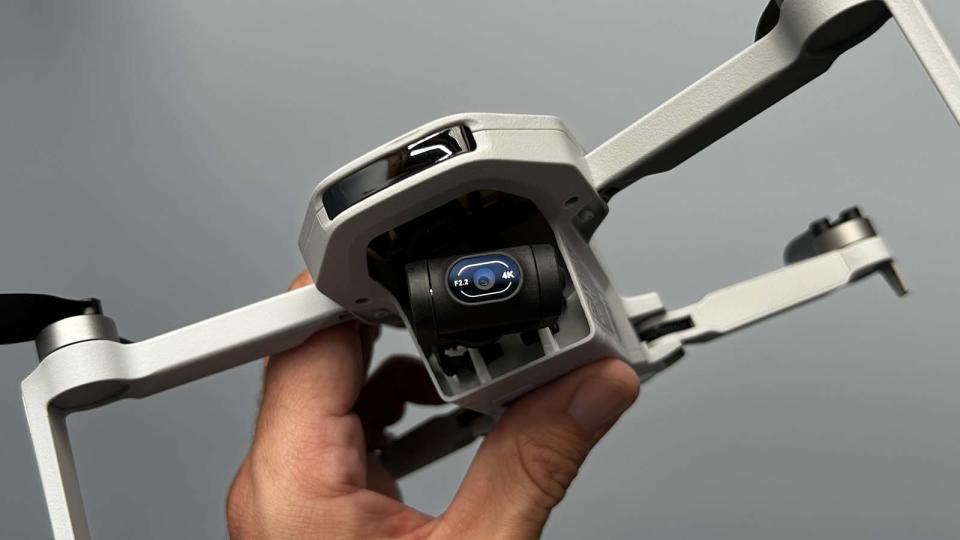
I experienced some issues with the Anti-Vibration Rubber Balls (AVBR), which are meant to help stabilise the gimbal. Potensic support and I were trying to figure out why the footage was so shaky, and they suggested checking it. It was stuck, and freeing it up helped remove the blurry lines in the footage (sample footage of this can be found below).
The AVBR are close to the area where the gimbal cover clamps onto the drone; I wonder if it had something to do with the problem. Potensic says the ACBR could get stuck if you don’t store the aircraft properly, for example, if you store the drone in the bag without the gimbal protector. The rubber ball may be stuck due to external shock or press. Whatever the reason might be, the issue can be solved quickly.
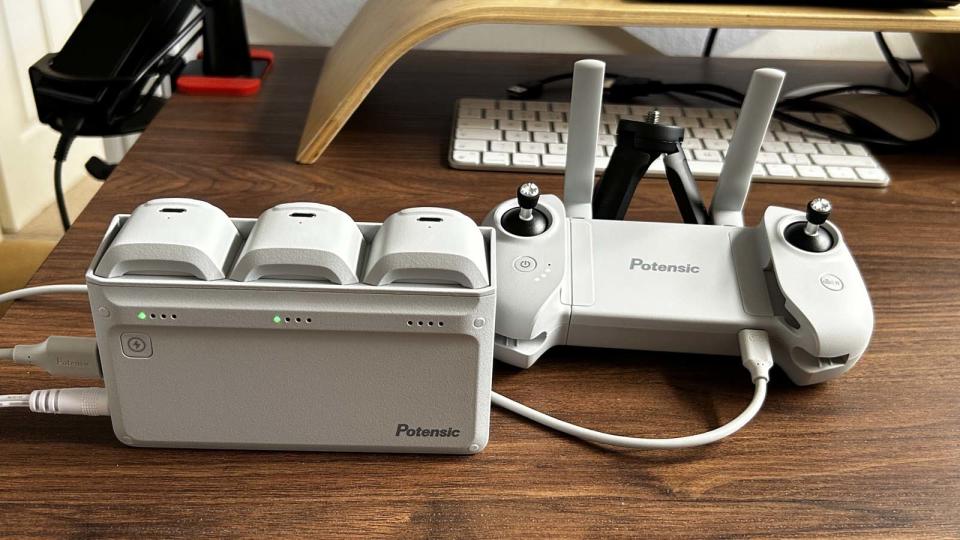
The drone uses the same controller as the Atom SE, too, and is made from the same grey plastic. Like the drone, the controller has a folding design; the two antennas fold out, and the length of the controller is also adjustable to accommodate whatever smartphone you're using to control the drone. I grew to like the controller since my initial review of the Atom SE – it's ergonomic and feels secure in hand.
To make the controller flatter when not in use, the two control sticks can be unscrewed and stored in the slots at the bottom. There are two shoulder buttons (one for taking photos, the other for starting/stopping video recording) and a wheel that adjusts the camera position vertically. You'll find a dedicated 'return home' button on the right.
Potensic Atom review: Flight performance
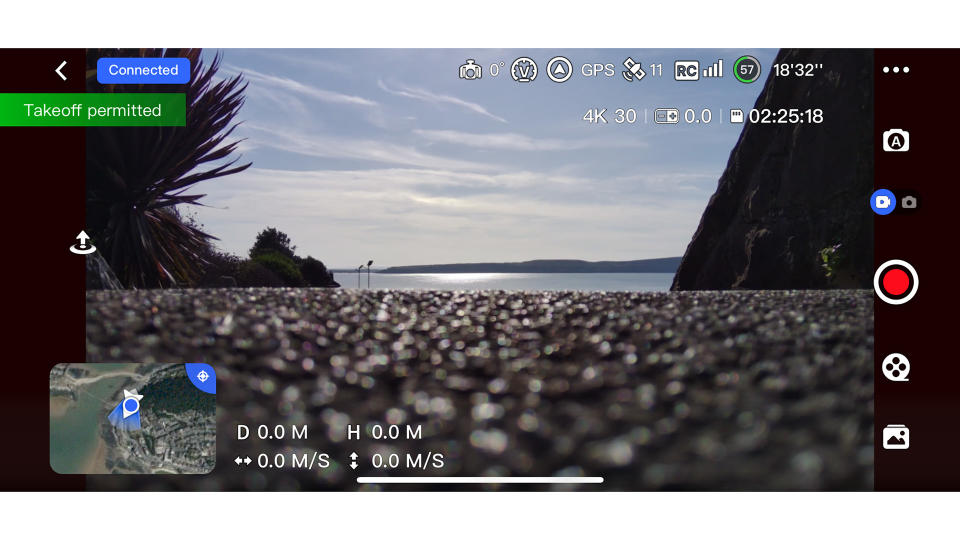
Improved GPS positioning
Level 5 wind resistance (on paper)
Easy-to-learn controls
Considering it was built similarly to the Atom SE, the Potensic Atom controls the same way its predecessor did. It's a small, lightweight drone, which makes it easy to manoeuvre around unless there is wind, in which case it'll struggle.
The Atom is said to have Level 5 wind resistance, but it didn't have a great time in any wind during testing. It'll hover steadily, and the footage is stable, but there could be other issues (e.g. blades in the footage). After all, the Atom is a lightweight drone which will be affected by wind more than heavier flying tripods.
This might be a problem if you live in a windy country/area like me (coastal UK represent!). It might also pose an issue flying the drone higher up, where it's not impossible to have stronger winds.
Apart from that, it's easy to fly the Potensic Atom. The drone is said to have improved GPS positioning, which helps it latch onto satellite signal quickly. The transmission range has been improved, too, from 4 km to 6 km. Of course, not only you can't fly the drone that far in the UK, but it also only works if the controller has an unobstructed view of the drone, which isn't often the case.
In my experience, the Potensic Atom could only go as far as 500 metres when there were (not too tall) buildings in the way, which is fine, as if there are buildings, there will be people and private property, so you shouldn't be flying the drone too far anyway.
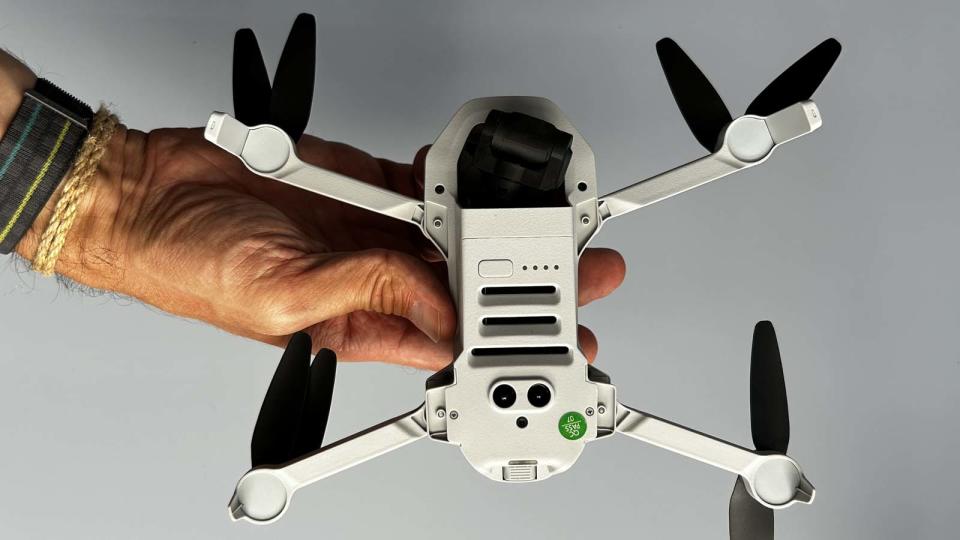
Flight time is ever so slightly longer at 32 minutes, up from 30 minutes on the Atom SE. This is a theoretical limit, of course, and in practice, flight time is around 20-25 minutes, depending on wind and the mode the drone is being flown in. Video mode is probably the least energy-intensive, mainly because it's the slowest of the three.
Yet another reason to get the Fly More Combo bundle includes three batteries. You still need to bring back the drone to swap batteries, but at least you don't have to call it a day after 20 minutes of flying.
The Potensic Atom features several automatic flight modes, enabling beginner pilots to shoot exciting footage without having to learn how to fly a drone. These include Pull-away, Rocket, Circle, Spiral, and Boomerang, which is way more than the Atom SE was capable of. Sample videos of some of these modes can be found below.
Better still, the Potensic Atom offers one-tap takeoff and landing, stable hovering, and return-to-home features, all of which help inexperienced pilots control the drone more confidently.
Potensic Atom review: camera performance
Poor camera quality
Improved camera setting
PixSync 3.0 transmission technology
I had a conversation with my colleague Derek recently, who reviewed many drones for T3, most recently the dinky Zero Zero HoverAir X1 (which, by the way, only has a 2.8K camera, unlike the 4K Potensic Atom). He said that the most frustrating thing about budget drones is that they advertise their camera by saying it's 4K, whereas, in reality, the quality of that 4K footage is subpar at best.
Sadly, this is the case with the Potensic Atom. The number of pixels might add up to 4K, but that doesn't mean much. The Sony CMOS camera mounted at the front of the drone has a maximum aperture of f2.2 and can shoot videos in 4k @ 30 fps, which, on paper, is better than the DJI Mini 2 SE, which can 'only' shoot in 2.7K @ 30 fps. In reality, both drones produce very similar-looking videos.
As you can see from the video above, the footage is also far from crisp. The dynamic range isn't great, the contrast is too high, and the definition is poor due to the small sensor and camera unit. On a more positive note, if you have the patience and are happy to shoot in perfect lighting conditions, the Potensic Atom allows you to change a number of settings, such as ISO, shutter speed, white balance, resolution, and framerates.

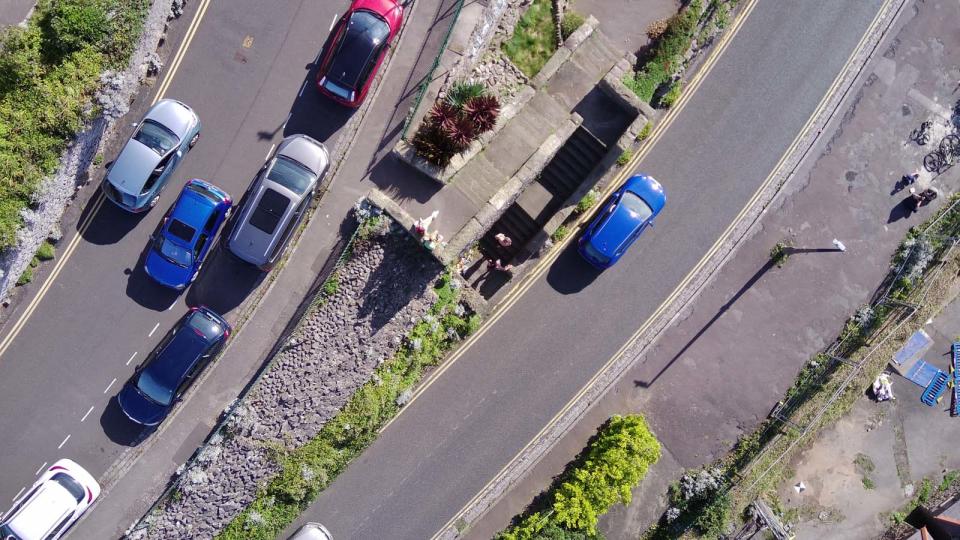
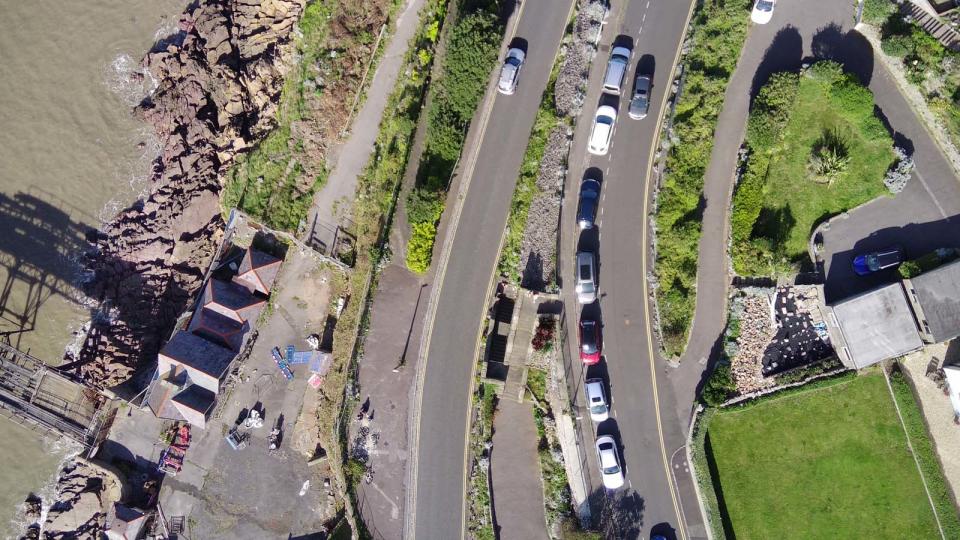
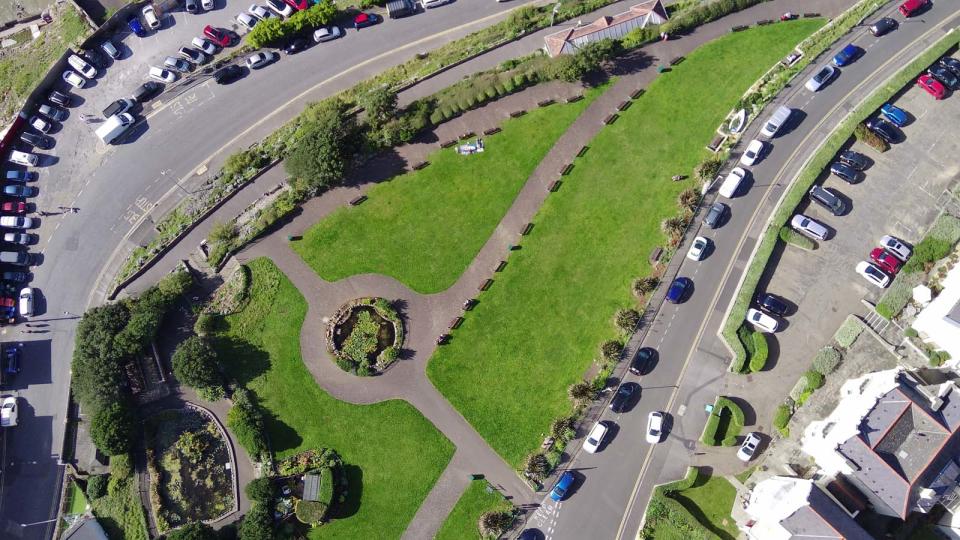


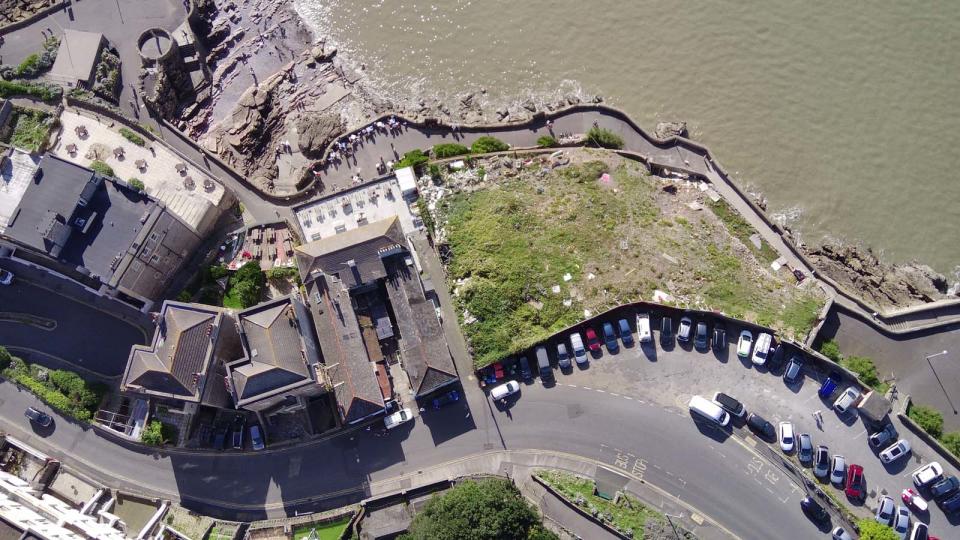
The images are somewhat better, and you can shoot in RAW, enabling you to post-process photos. Again, there is only so much you can do with such a small sensor, but at least shooting in RAW allows you to play around a bit in post.
Returning to the question of wind, I noticed on some footage that the blades were visible. I asked Potensic, and they said I must have angled the camera too high in strong wind, which pushed the blades down.
The blades poking into the frame made me question why you would allow a +20° camera angle on such a small drone affected so severely by the wind. It makes sense on drones such as the DJI FPV, but here, it's just a stat that doesn't actually elevate user experience.
Potensic Atom review: verdict

I must reference my colleague Derek again, whom I already mentioned above. As well as sharing his thoughts on drone manufacturers pinning their product marketing on numbers that don't translate to real-life performance, he also noted that unlike RC helicopters, which we buy for the sake of flying, the value perception of camera drones very much depends on how well said cameras perform.
From that perspective, it's not easy to recommend the Potensic Atom. Even without considering the issues I had – after all, they could be related to the review sample I was sent – the camera performance isn't the best, to say the least. If you want to shoot beautiful landscapes of rolling hills in the sunset, you'll be bitterly disappointed with the Atom.
That said, it's tough (and unfair) to judge the Potensic Atom without taking the price into account. This is very much a budget flying tripod that offers many beginner-friendly features and solid flight capabilities. If you can't justify paying 5-6 times as much for a mid-range DJI, the Atom will help you experience drone piloting without breaking the bank.
And although I haven't been praising the drone for its video performance, it's certainly good enough for hobby drone flyers. It might not be super sharp or balanced, but under optimal weather and light conditions, you'll be able to create decent footage for yourself.
Maybe Potensic should consider launching a new drone called Atom Pro with a decent camera unit for a little bit more money to showcase they can create a drone with outstanding video capabilities. Surely, it's not impossible to stick a good camera on a drone in this day and age!? Don't worry about extending the transmission range or adding more autonomous features. Leave everything as is; just add a decent camera. I'll be waiting.
Potensic Atom review: also consider
Please see my recommendations above. Alternatively, check out T3's best budget drones and best beginner drone guides.
The best Potensic Atom alternative is the DJI Mini 2 SE. The feature set and performance of this dinky drone are beyond reproach at this price point, which is more or less the same as the Atom. You miss out on some camera features compared to the Mini 2, but the DJI Mini 2 SE offers more than enough functionality for beginners. Read my full DJI Mini 2 SE review.
The pocket-sized Autel Evo Nano was the first small consumer drone capable of giving DJI a thoroughly good innings. At just 249g, this little bird is equipped with a 1/2-inch camera for ravishing 4K footage and 48-megapixel stills (compare this to the Potensic Atom's 12MP images), plus three-way obstacle avoidance for added in-flight safety. It's more expensive than the Atom, but is worth it. Read Derek's Autel Evo Nano review.
